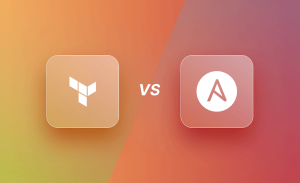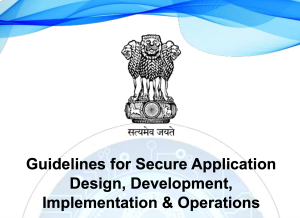
gRPC is an open-source, high-performance framework developed by Google for building efficient and scalable remote procedure call (RPC) systems. It allows communication between client and server applications, enabling them to communicate and exchange data seamlessly across different platforms and programming languages.
Here are some key aspects of gRPC:
- Protocol Buffers (protobuf): gRPC uses Protocol Buffers as its interface definition language (IDL) for describing the structure of data being sent between the client and server. Protocol Buffers offer a language-agnostic, efficient, and extensible way to serialize structured data.
- Strongly-typed contracts: gRPC uses protobuf to define service contracts and message types. This enforces a strong contract between the client and server, ensuring that both parties understand the structure and meaning of the data being exchanged.
- Bi-directional streaming: gRPC supports various communication patterns, including unary (single request and response), server streaming (client sends a request and server responds with a stream of messages), client streaming (client sends a stream of messages and server responds with a single message), and bidirectional streaming (both client and server can send and receive streams of messages concurrently).
- Language and platform agnostic: gRPC provides support for a wide range of programming languages, making it possible to build client and server applications in different languages. It offers official support for languages like C++, C#, Go, Java, Python, Ruby, and many others.
- Performance and efficiency: gRPC is designed to be highly efficient and performant. It utilizes HTTP/2 as the underlying transport protocol, which enables multiplexing multiple RPCs over a single network connection, reducing latency and overhead. It also supports features like flow control, header compression, and bi-directional communication, enhancing performance.
- Interoperability: gRPC supports interoperability between different platforms and languages. It allows clients and servers to communicate seamlessly, even if they are implemented in different languages. This makes it easier to integrate existing systems and build microservices architectures.
Overall, gRPC simplifies the development of client-server communication by providing a high-performance, language-agnostic, and efficient framework. Its support for various communication patterns, strong contract enforcement, and wide language compatibility make it a popular choice for building scalable and reliable distributed systems.
A working example of gRPC in PHP
To demonstrate how to use gRPC in PHP, let’s create a simple working example of a client-server interaction. In this example, we’ll create a gRPC server that provides a simple “Hello” service, and a gRPC client that sends a request to the server and receives a response.
- Set up the environment:
Ensure that PHP is installed on your system.
Install the required dependencies by running the following command in your project directory:
composer require grpc/grpc
2. Define the gRPC service:
Create a file named hello.proto and add the following content to define the gRPC service and message:
syntax = “proto3”;
service HelloService {
rpc SayHello (HelloRequest) returns (HelloResponse) {}
}
message HelloRequest {
string name = 1;
}
message HelloResponse {
string message = 1;
}
3. Generate the gRPC code:
Run the following command to generate the PHP classes from the hello.proto file:
vendor/bin/protoc –php_out=./ –grpc_out=./ –plugin=protoc-gen-grpc=./vendor/bin/grpc_php_plugin hello.proto
4. Implement the server:
Create a file named Server.php and add the following code:
<?php
require ‘vendor/autoload.php’;
class HelloServiceHandler implements \HelloService\HelloServiceInterface {
public function SayHello(\HelloService\HelloRequest $request): \HelloService\HelloResponse {
$name = $request->getName();
$message = “Hello, $name!”;
return new \HelloService\HelloResponse([‘message’ => $message]);
}
}
$server = new \Grpc\Server();
$server->addHttp2Port(‘0.0.0.0:50051’);
$server->handle(new HelloServiceHandler());
$server->run();
5. Implement the client:
Create a file named Client.php and add the following code:
<?php
require ‘vendor/autoload.php’;
$client = new \HelloService\HelloServiceClient(‘localhost:50051’, [
‘credentials’ => \Grpc\ChannelCredentials::createInsecure(),
]);
$request = new \HelloService\HelloRequest([‘name’ => ‘Prafulkr’]);
$response = $client->SayHello($request)->wait();
echo $response->message . “\n”;
6. Start the server:
Open a terminal and run the following command to start the gRPC server:
php Server.php
7. Run the client:
Open another terminal and run the following command to execute the gRPC client:
php Client.php
You should see the following output:
Hello, Prafulkr!
That’s it! You have successfully implemented a simple gRPC client-server interaction in PHP. This example demonstrates the basic usage of gRPC in PHP, and you can build upon it to create more complex applications using gRPC services.





